In this system of shoals about the size of Rhode Island, you don’t need to follow the fleet to hook up with slab fluke.
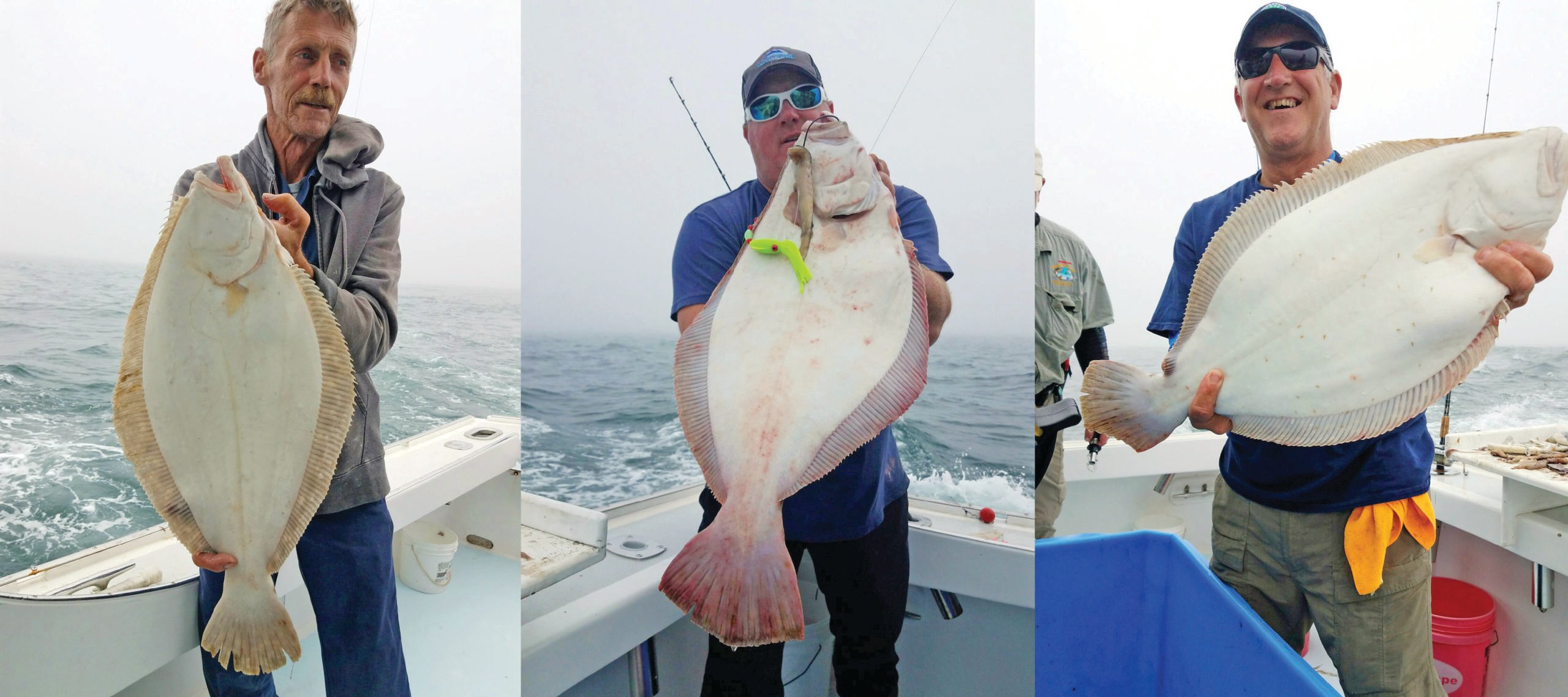
Long before Nantucket became the leading destination for slab-sized summer flounder we would watch the weather and make an occasional foray to the rips at Tuckernuck and Muskegut shoals where a man, who was not intimidated by those ever-changing rips, could bounce a bucktail and fill a box or two with brawny stripers. The occasional double-digit blues that prowled the same turmoil of waves and sand could twist and disable a sturdy wire line outfit in short order. Snapping jigs on wire line was the traditional method of hooking up but on occasion it took a larger offering in the form of a diving swimming plug to tempt the larger stripers.
One beautiful July morning, with three gorgeous golden blonde striped bass in the cooler, I felt a solid hit and a surge of unusual energy; this was certainly not a striper, I thought, as the fish came off the bottom head shaking like a big blue. Fluke, particularly big fluke, are reluctant to give up the bottom but this one came straight up and began head slapping, trying to dislodge the plug in its sizable maw. Without the net at ready I grabbed the pick gaff and – in one motion – stabbed and twisted, lifting the 26-inch flattie over the rail. As soon as I released the gaff the furious fluke crashed into a wooden fish box, ripping the lure from its jaw. Fishing is full of surprises. 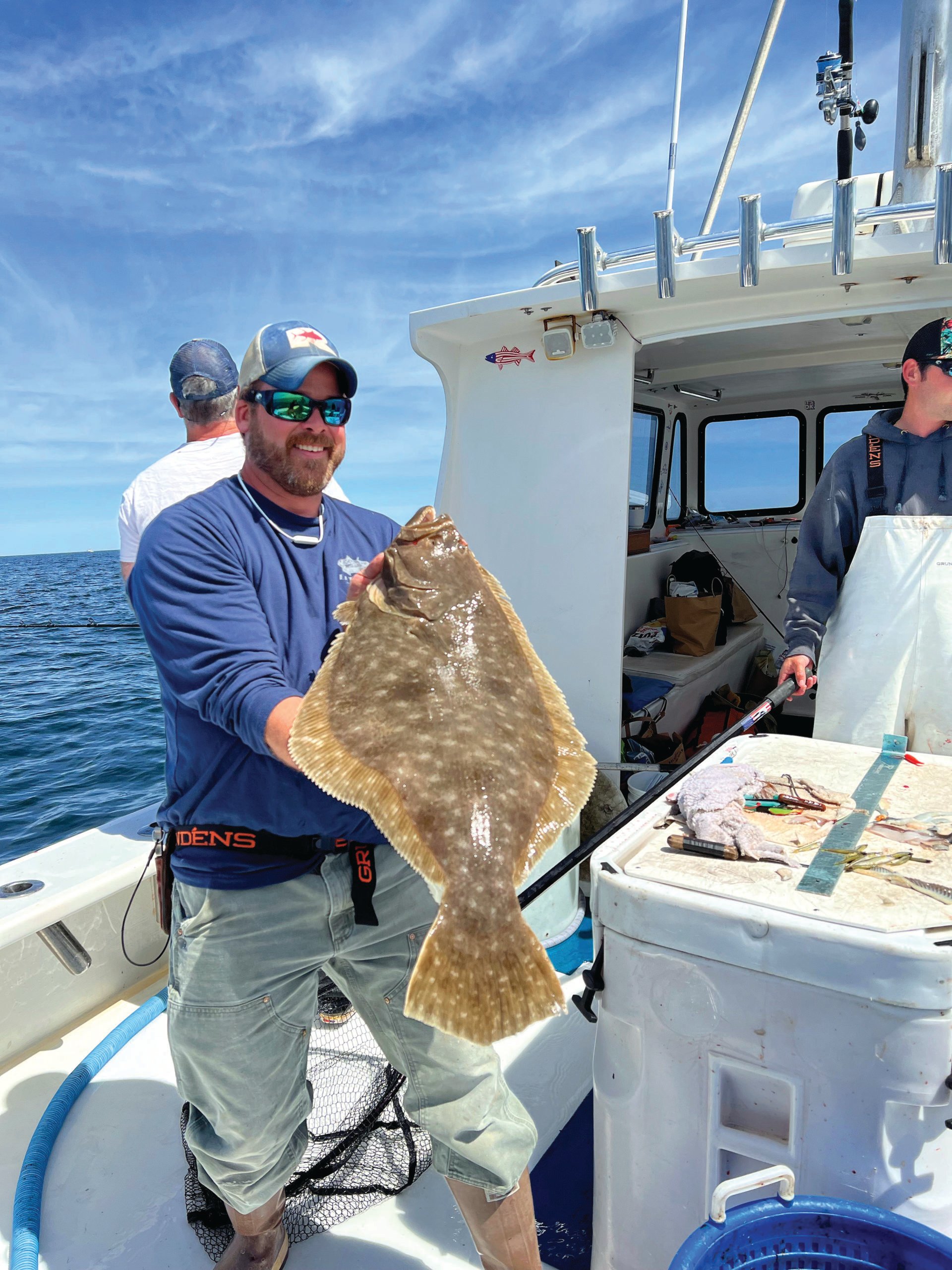
Stealing Numbers
Captain Roger Jarvis was a dear friend who several decades ago officially registered a 60-pound cod and a 50-pound striper at Nantucket Shoals on the very same trip. He also shared a similar experience with the aggressive large fluke in that area. Those fluke were competing for bait with stripers in the 20- to 30-pound class. That was then and this is now. Everyone reading this has either heard about or fished for doormat fluke in the Nantucket Shoals area. Some sailed on a local charter boat while others attempted to find the fish on their own. That usually included steaming to a location where they found the fleet of boats and joining them.
According to a number of high-line Nantucket fluke kippers, a few others climbed aboard their craft with the intention of securing a few locations, or some “numbers” they could return to. A few of them arrived in 28-foot center consoles with 800-horsepower motors bolted on the transom. Our friend Jimmy the Greek has run into this problem and whenever he was being dogged he would not return to the Promised Land of his hard-won doormat haunts with followers on his tail, potentially ruining the trip for his onboard clients.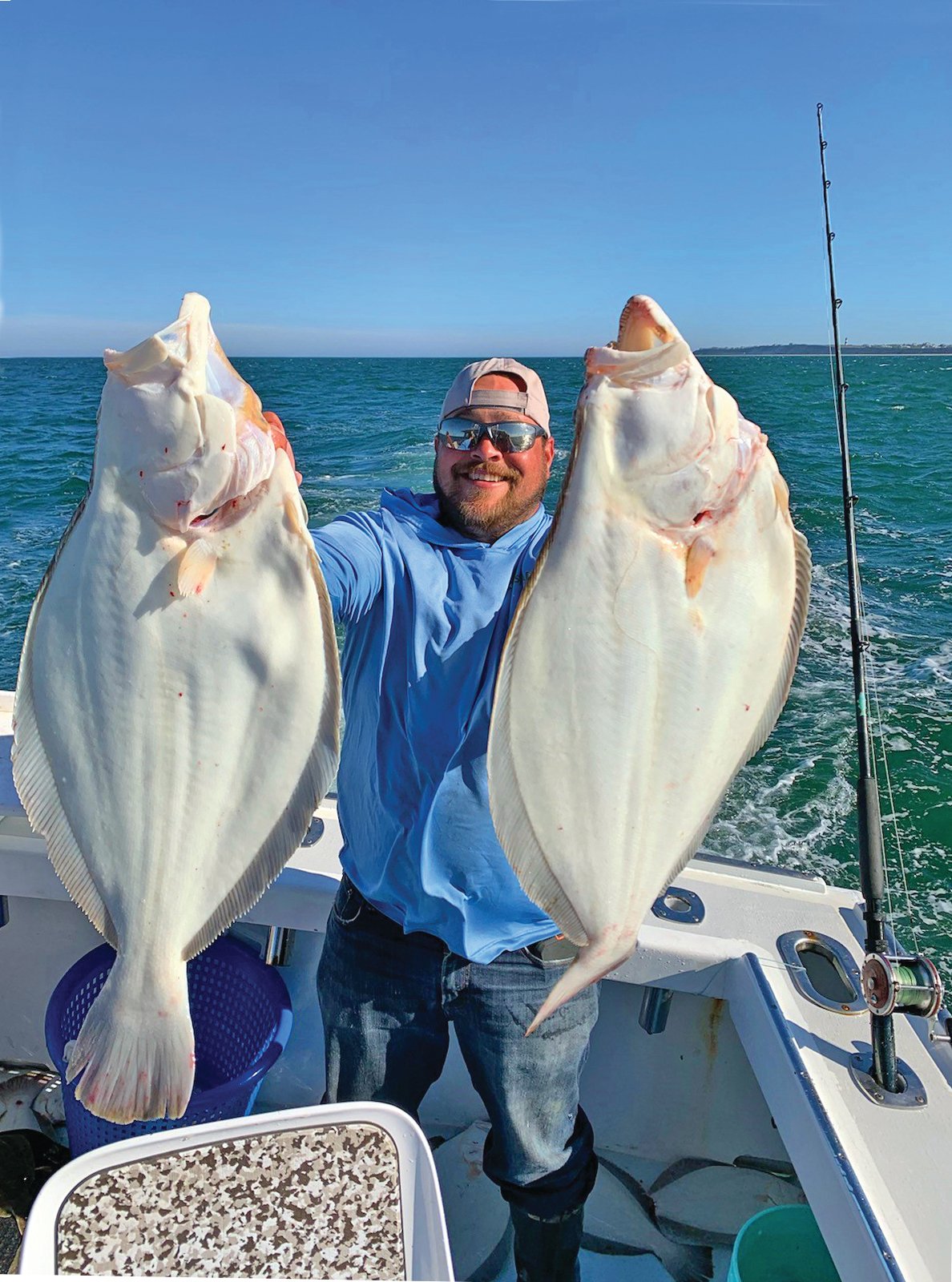
Forget the Fleet
A few years ago I talked Captain Seamus Muldoon of Jailbreak Charters in Harwichport into making an exploratory fluke trip to Nantucket. I invited a few friends I knew to be fluke enthusiasts and told them we would be paying the expenses and would not be heading for the Promised Land, but instead looking to locate some pristine bottom, if there was such a thing, to probe on future fluke trips.
The fluke fleet was out that day as we confirmed by the chatter on the radio as we left the harbor in dense fog however the only other boat we saw that day was a big commercial clammer, hove to and culling their catch after their last set. We exchanged greetings then turned on that sighting and went back over the clammers dredge spoil. Four large fluke came to the net on that drift with an additional two head-shakers winning their freedom. There was a decent sign of life in that pond, but with the objective of visiting as many sites as possible the skipper punched in the numbers in and we moved on to another segment of promising looking bottom. We caught at least one fluke on all of the drifts we made, and it was challenging to leave a productive spot, but we weren’t there to load up on fish but to add as many sections of productive bottom to the log book as possible.
I can understand that it’s much easier to follow the crowds and drift along the same bottom, but I find it much more gratifying, going my own way and covering new areas. We had already been forced to leave some of the best nearshore fluking on Lucas Shoal and Middle Ground because we were being dogged on those well-known pieces and moved off to get away from the crowds. We then found some very good action within a few miles of those locations. When you go looking you will appreciate your space and privacy, especially when a claim jumper, who spotted you with a fish on, sets up on your drift and watches you net a few more fish. And don’t be surprised if the more unscrupulous of this type, make a close drift, attempting to snag your line in the hope of learning what you’re using! It’s a risky move, but it’s been done to me.
Proceed with Extreme Caution
Nantucket Shoals is a large and very dangerous area of rips and shoals—when compared on a map, the entire area is about the size of Rhode Island. These unpredictable waters have claimed an untold number of lives and large vessels, such as the oil tanker Argo Merchant. This is not the place for the newbie and his friends to make the trip in a 21-foot center console. Due to its location the weather can be very changeable and the island itself has been given the nickname of the Grey Lady, thanks to the relentless fog that plagues the area. I have fished here on numerous occasions when we never saw the sun and the only land we saw was when we were running around Great Point light.
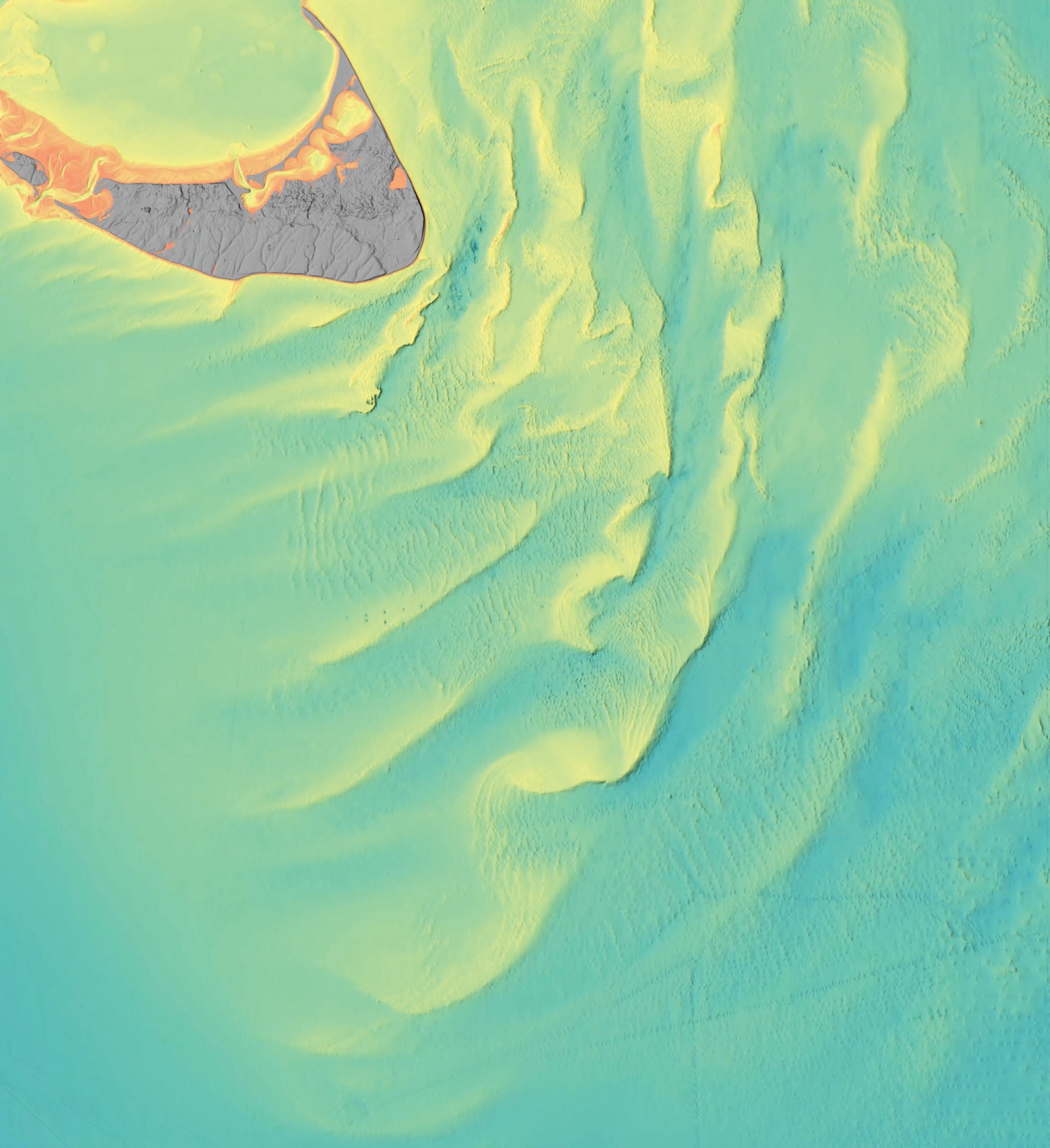
For fluke anglers with larger craft, preferably boats with twin engines, it is necessary to pick a fair weather day as even with decent forecasts some of those trips home, can be white-knuckle adventures with the afternoon breeze against the tide. (But they are usually made easier by a cooler full of slabs!)
Nuts & Bolts
July and August are excellent months as the squid run is tapering off and the fish transition into sand eels, cunners, scup, lobsters, and crabs. As the season progresses and the weather and water warms the fishing can transition closer to the island, in shallow areas where some friends have enjoyed success. We’ve also enjoyed productive trips fishing the waters off the northwest shore of the island, with one of those productive locations being along the area in front of the home of the former TV personality Mr. Rogers. I’ve also found that same location has produced numerous double-digit bluefish that seem to take great pleasure in tearing up fluke rigs, build plenty ahead of time, so as not to lose time rigging during a hot bite.
On or near slack water we use Andrus Lima Bean Jigs in the 3- to 5-ounce size on a three-way swivel with a Gulp teaser 15 inches up from the jig and tied 2 feet off the swivel. Gulp has been the standard, but the scented, USA made, 6-inch grubs from Fishbites are also a viable option. When fishing deep in strong tides we drop down to 30-pound test Power Pro and 30-pound fluorocarbon leaders. When the tide begins to honk, I switch to the Tsunami Fluke Balls in sizes up to 8 ounces. It’s often necessary to use sinkers up to 16 ounces to tend bottom, but I hate them because you can’t catch a fish on a sinker unless you rig a hook and bait leader off that dropper.
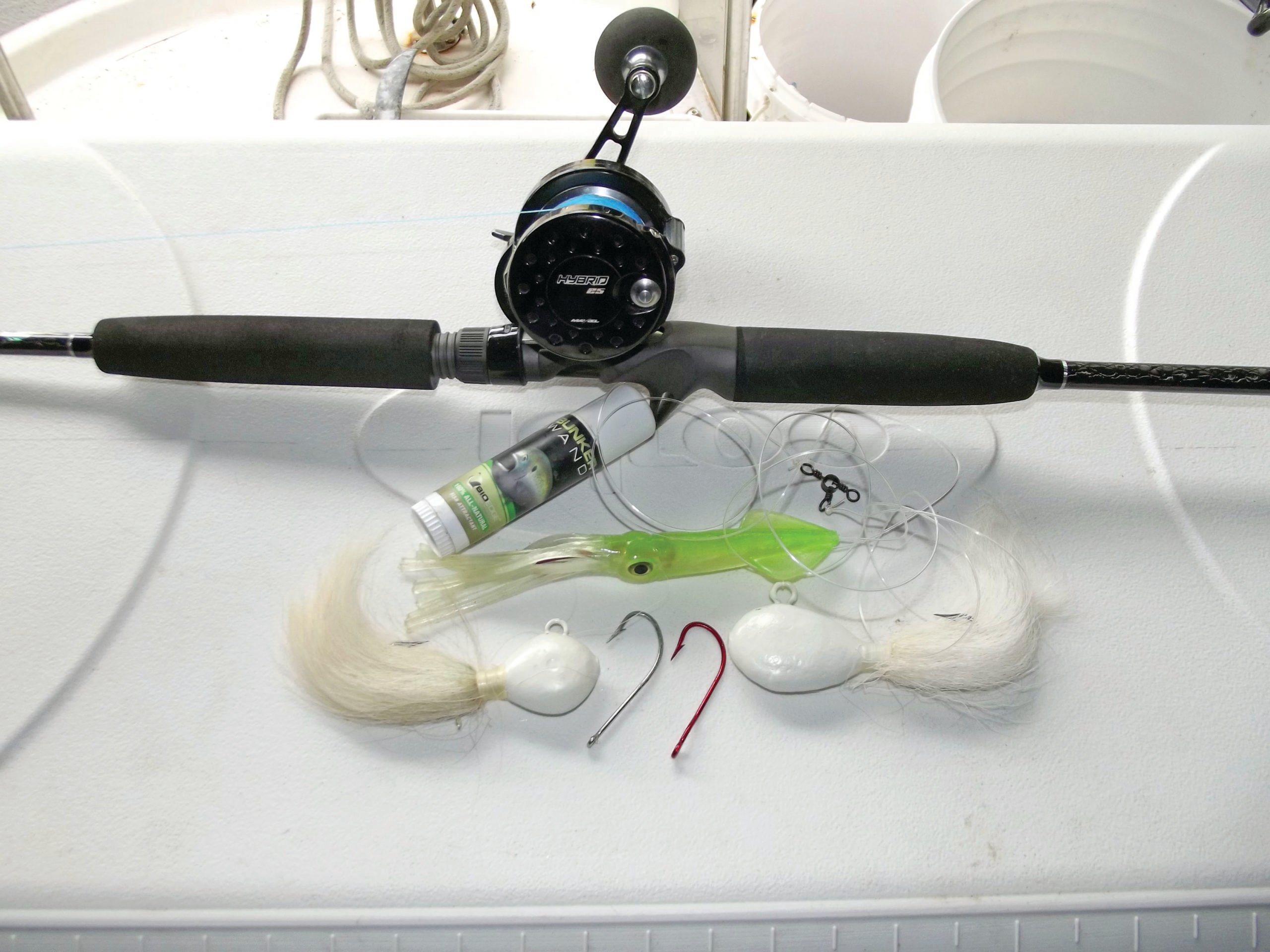
I would suggest leaving the spinning gear home. The most efficient tackle is one of the newer style compact conventional reels with a 5 or 6 to 1 gear ratio on a medium fast action rod. My outfit for the last three seasons has been a Maxel Hybrid 25 star drag reel on the Tsunami Trophy series 6-foot Xtra Heavy action rod. While most of the fish caught will be in depths ranging around 80 feet I have caught quality fish in depths where I could see the bottom. Don’t bring a crab net to a fluke fight. Buy and learn how to deploy the best and biggest net you can afford and keep their heads underwater until you slip them in the net. Find the bait and you will find the fish.




